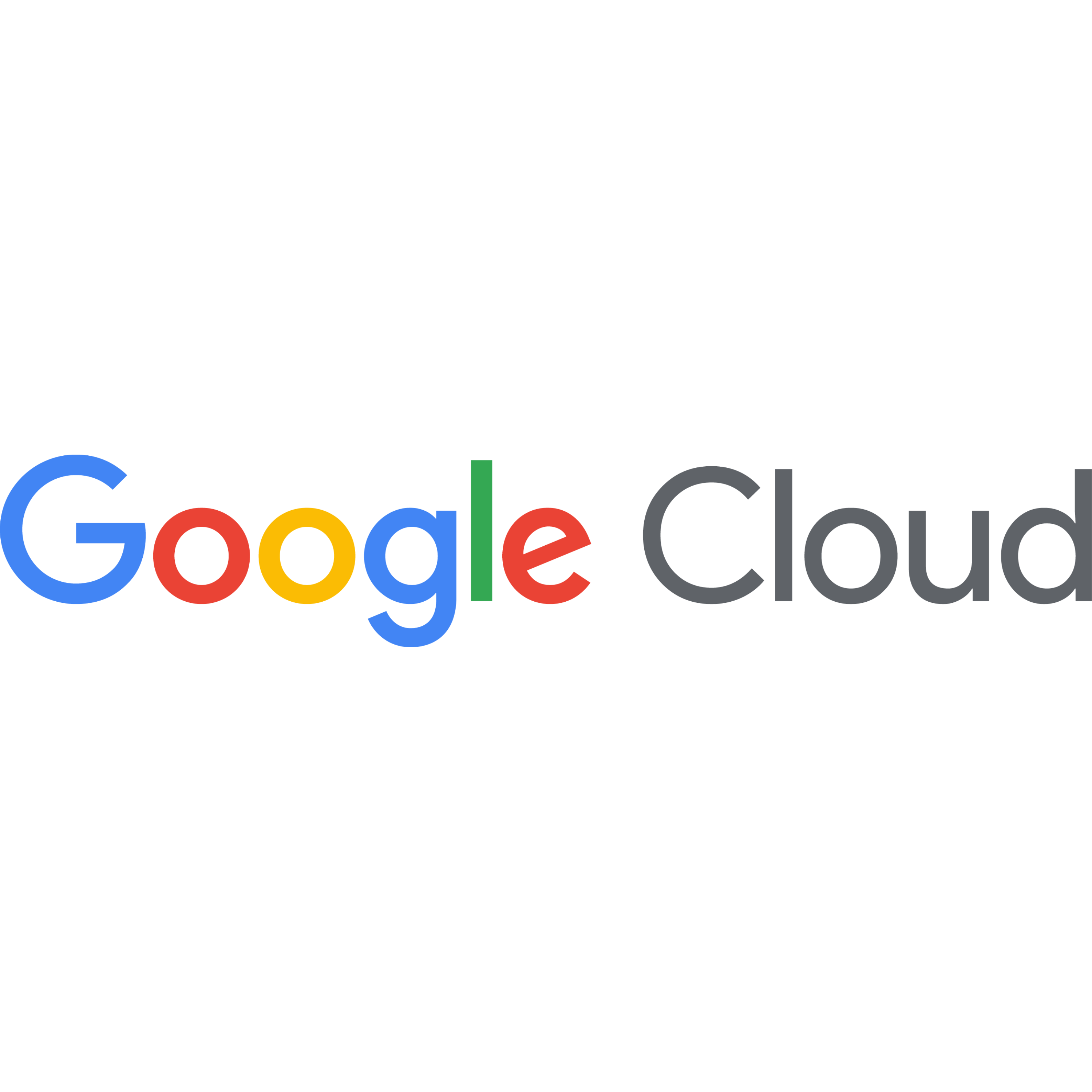
While Google Cloud revenue for 2022 will surely blow past $25 billion, perhaps it’s not surprising that the company continues to innovate and evolve at the speed of a startup because, as CEO Thomas Kurian told me recently, “we really were born as an enterprise company just four years ago.”
That youthful mindset is helping Google Cloud differentiate itself in the Cloud Wars through a combination of products and solutions that are both wide-ranging and unique; customer-engagement models with unprecedented reach and scope; and a mission-driven outlook centered on solving the problems of today while simultaneously creating the opportunities of tomorrow.
In a recent video interview — you can view the entire conversation here — Kurian made a point of highlighting Google Cloud’s short history as a big-time player in the enterprise space because he believes that timetable has been a factor in helping his company focus on where the world is headed rather than on where it’s been. For Google Cloud’s customers, that provides a much-needed focus on speed, agility, and evolving constantly to changes in the external marketplace.
And as those customers move into 2023 and try to gauge how aggressive or how cautious they should be in these uncertain times, Kurian said Google Cloud is able to offer those business leaders a variety of options to help them meet their business objectives, including how they reach customers, how they protect themselves from risk, and how they optimize the hybrid-work environment.
Customers: Viewing Challenges and Opportunities in Various Ways
“When we talk to CEOs of our customers, in the long term, technology’s always a big part of improving productivity, and cost efficiency and differentiation for our customers,” Kurian said.
“Therefore, we’ve seen them continue to move projects forward but the lens on which these projects are applied may be slightly different as they face this period of uncertainty. But for sure, we see a lot of programs continuing and they can be viewed through four or five lenses.
“They might say I need to improve as a company in the way I reach customers and to do so in a different way. Because if you’re a financial institution like BBVA — or if you’re a retailer, as we supported millions of them through this Black Friday season — even if there’s economic uncertainty, they need to put their products in the hands of customers.
“Second, they want to reduce risk in two different ways. One could be business risk, and we’re helping many companies with their supply chains, ensuring their supply chain is resilient through this period, whether that’s a healthcare organization like Cardinal, or it’s a retailer, or a manufacturing company. Then there’s protection against technology risk, particularly around cyber risk, like the work we’ve done at Equifax and at stock exchanges to protect them.”
The third approach highlighted by Kurian involves the heightened level of anxiety many workers are feeling as economic uncertainty triggers concerns about possible layoffs and/or changes in work-from-home status. I found it interesting that Kurian cited the ability of Google Workspace to be a force for helping organizations lower that potential anxiety — after all, Workspace has been traditionally touted as a productivity and workflow solution.
“The third one has to do with how organizations see their employees,” Kurian said.
“Remember, no matter how much uncertainty there is in the market, the employees of companies start to feel anxious about whether there’s going to be some sort of change in employment status. So in the wake of the pandemic, we see a lot of organizations using our digital Workspace tools to enable hybrid work not just to make people productive, but to help them feel included and to bring that sense of togetherness back into organizations.”
That strikes me as an example of the youthful outlook to which Kurian referred, as Google Cloud, based on what it’s hearing from customers about their business challenges, has expanded its positioning of its products and solutions to meet not just workflow but workspace issues.
He cited the work Google Cloud’s doing with Colgate as an example of pulling frontline manufacturing workers into the digital future.
“So these are all different lenses through which companies and organizations are seeing this period of uncertainty and using technology to help them both in the short term to address some critical business priorities, but also in the long term to position themselves for differentiation.”
The Power of Consumer Insights Plus Enterprise Insights
As Google Cloud’s customers strive to achieve that differentiation in a rapidly evolving world, Kurian came back to a theme that he touches on regularly: What business leaders want from the cloud today is different from what they wanted in the past, and will surely not be the same as what they want in the future.
“You know, when you build a partnership, it’s about a long-term relationship,” Kurian said about some of the long-term business-transformation deals that I’ll come back to in a moment.
“And you want to tap into the technology not the way it is today, but the way it will be in the future. And Google brings uniquely an understanding of both consumer and enterprise because we have both a very strong consumer presence, allowing us to understand markets in a very different way and understand consumer needs, and also understand enterprise needs because of the success we’ve had with cloud.
“And so our customers are betting not just on one point in time, but in an extended vision for how that may evolve.”
That point — “an extended vision for how that may evolve” — is central to the value proposition Google Cloud offers to the market, and it deeply reflects the mindset Kurian has instilled since taking over as Google Cloud CEO in January of 2019.
Here in 2023, Google Cloud will continue to build on that capability by enhancing its capabilities across three strategic areas: products, go-to-market, and partners. That trifecta has been at the foundation of Kurian’s strategy since he joined Google Cloud four years ago, and in our late-December interview he offered an overview of why those elements will be so vital to customers in 2023.
Products: “Provide Differentiated Capability for Customers”
“The first element of our strategy has always been to design products to meet customer needs, to listen deeply to what those customers are telling us, and to really optimize the solutions for them,” Kurian said. And he cited a few customer examples:
- Data Cloud to help giant grocery chain Albertsons understand and optimize inventory;
- AI to help Comcast improve the performance of its call centers;
- Cybersecurity (Mandiant) to guard against digital risk for big financial institutions, payment companies, retailers, and more; and
- Workspace to allow servicemen and servicewomen in the U.S. Army to communicate from anywhere securely, and also be able to communicate with their families.
Go To Market: Deep Expertise to Drive Customer Value
Emphasizing that “we are continuing to hire and invest for growth,” Kurian outlined the need for “deep expertise” in areas such as machine learning (ML), data, analytics, and cybersecurity because “those are all very sophisticated, complex areas for customers.”
Google Cloud’s also continuing to be an aggressive competitor in the extraordinary arms race with Microsoft, Amazon, and now Oracle to build cloud regions across the globe to keep pace with new customer expectations around sovereignty, data residency, local control and governance, and privacy regulations.
Noting that Google Cloud is live in 36 regions and has announced plans for 14 more, Kurian said, “We have to not just put those regions out there but also make sure our people are there because we have to have the right capability from our go-to-market organization to support customers in those countries.”
Partners: “Our Success Is Tied to That of Our Partners”
Pointing to a “deep, deep program” encompassing every category of partner including independent software vendors (ISVs), Kurian said that more than 800 independent software vendors are currently building applications on BigQuery. That booming new business opportunity, he said, follows a very intentional move by Google Cloud to ensure BigQuery can engage with data from Azure, Amazon, and on-premises sources as well, which he described as “the first step to give people flexibility” in today’s unconditionally multi-cloud world.
“So we are working not just to bring our solutions direct, but also with partners to help people use our technology,” Kurian said.
“So every step of the way we continue to focus our teams on understanding other new needs that are emerging and how can we be more responsive? Because the more you listen, and the faster we help customers resolve their problems, the better we grow, right?”
Massive Business Transformation Deals: 3 Types
One of the drivers behind Google Cloud’s impressive growth rates — it’s been at or near the top of the Cloud Wars Top 10 Growth Chart for the past two years — has been its ability to lock down billion-dollar deals that involve sweeping business transformations across several years.
Kurian described these megadeals as “partnering for a purpose” and said they come in three varieties:
- help a customer evolve technology and its use in new ways;
- help a customer redefine a market; or
- help a customer totally change a market.
Mayo Clinic: AI innovation
“We’ve worked for multiple years now with Mayo Clinic in the application of artificial intelligence and large-scale analytics to help diagnose rare diseases. And rare diseases are an important area because traditionally, machine learning required lots of data to train but the term ‘rare disease’ means it’s rare that you will get that. So how do you apply the limited amount of data you have? That’s an example of where we’re applying and evolving a technology in concert with a market-leading institution.
Chicago Merc: Changing the definition of a market
Kurian described this challenge as an effort to make financial markets “much more accessible to both institutional clients but also to retail investors.
“The way a stock exchange works is it has a data center in which are a set of machines. And in order to trade or participate in it, people have to co-locate their machines with the market-making infrastructure. And just a law of physics says that if you’re outside of that, you are at a latency disadvantage relative to what the people who can be inside of that can do.
“So the big part of the work we did with and are doing with the Chicago Mercantile Exchange is to redefine the reach that the exchange could have if it reconstituted the exchange in a public infrastructure. And that’s redefining a market.”
Renault: Changing a market through technology
While Google Cloud is deeply involved with Renault’s remarkable evolution — please see “Google Cloud and Renault Blur Lines between Auto, Tech Industries” — that megadeal also involved multiple parts of the Alphabet family as well to, as Kurian put it, “redefine the nature of the vehicle.”
“It includes what we’re doing with the vehicle itself but also includes what we’re doing in the cloud to fundamentally redefine the nature of the vehicle, how efficiently that vehicle is digitized, and how efficiently it will work,” he said.
“And we’re doing the same with Ford, and these efforts are reconstituting the nature of what a vehicle is. Think about a truck that has a digital representation. And if you’re Federal Express or UPS or any client of theirs, as the truck moves around, you have an accurate up-to-the minute representation of the space that’s available, what packages can be put in, is it refrigerated, and so you can then dynamically optimize your fleet.
“And because the vehicle has been digitized, you now have the ability to do that.”
Top Priorities for 2023: Edge, Cybersecurity, AI, and Specialization
What I’ve been able to share in this article are just some of the highlights offered by Kurian, and I’d strongly urge you to watch the full-length video interview here to get his views on industry-specific solutions, company culture, hiring world-class talent, and more.
But on some big issues for 2023, here’s Kurian on the three big ones mentioned above:
- Edge: “We’re seeing the continued growth of where the cloud manages the edge and sort of reconstitutes what some people call on-premise by saying it’s now a cloud-managed on-premises environment. That’s a big thing we see for the future.”
- Cybersecurity: “We built a product called Software Delivery Shield, and the goal there is to protect the software supply chain…. So we are seeing a huge amount of interest in cyber but not just to protect corporate systems and national critical infrastructure but also embedded software.”
- AI: “We really do believe that AI is mainstreaming…. Whether that’s to get better visibility, better inferencing, better forecasting, but also frankly making AI more a part of the core business process and organization. To understand customers needs better or automate some process, AI is rapidly becoming more pervasive.”
Final Thought
I want to close out this article on Thomas Kurian’s thoughts about 2023 by coming back to his views on the youthful and forward-looking outlook of Google Cloud. Early in our conversation, Kurian pointed it out quite pointedly — and while he didn’t specifically say the company thinks that way because it’s really only four years old, that was his point.
And more important than that being his point, the customer examples and strategic insights Kurian raised throughout our conversation make it abundantly clear that Google Cloud is singularly focused on creating the future.
“The important thing I always say is that if you look at our position in the market, we really were born as an enterprise company just four years ago. I looked up your Cloud Wars Top 10 list, and the company that was founded most-recently before us was ServiceNow, and that was back on 2006.
“So we really are the new kid on the block.”
Right — a new kid with 2022 revenue of about $26 billion and a 30%-plus growth rate predicated on helping customers create their digital futures.
Sign up here for the CEO Outlook Digital Summit to start your free subscription and see all of the Cloud Wars Top 10 CEO Outlook interviews that will air on February 8, 2023, or upgrade to Premium and get your all-access pass to our entire practitioner analyst library of content









